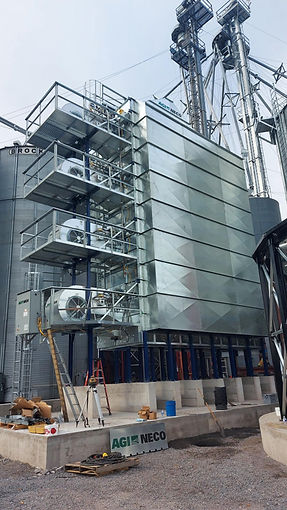SOYBEAN
PROCESSSING


Soybean Roasting
Soybean roasting is a thermal processing method that involves subjecting soybeans to high temperatures to achieve desirable flavor, aroma, and texture. The roasting process can be performed using various equipment such as roasting ovens or dryers. The first step in soybean roasting involves cleaning and sorting the soybeans to remove any impurities. Once cleaned, the beans are typically preheated to remove excess moisture and enhance the roasting efficiency.
Next, the soybeans are transferred to the roasting equipment, where they are exposed to heat. During roasting, the high temperature causes chemical reactions within the soybeans, resulting in flavor development, reduced moisture content, and improved digestibility. The roasting time and temperature can be adjusted to achieve different levels of roasting, ranging from light to dark. Lightly roasted soybeans retain a mild flavor and are commonly used in salads or snacks, while darker roasted soybeans have a more intense and nutty taste, often used in culinary applications or as a coffee substitute.
Roasting also imparts a desirable aroma to the soybeans by releasing volatile compounds. Additionally, the heat causes structural changes within the soybean, leading to a crisper texture. The roasted soybeans can be further processed into various forms, such as whole roasted soybeans, roasted soy flour, or roasted soybean meal, depending on the intended application.
Soybean Extrusion/Crushing
On the other hand, soybean extrusion is a mechanical and thermal processing technique used to modify the physical and chemical properties of soybeans. Extrusion involves subjecting the soybean material to high temperature, pressure, and shear forces within an extruder. The extruder is a specialized machine comprising a barrel, screw, and die system. As the soybean material passes through the extruder, it experiences intense heat and pressure, leading to various transformations.
During extrusion, the soybeans are first cleaned and conditioned to achieve an optimal moisture content. The conditioned soybeans are then fed into the extruder, where they are subjected to a combination of heating, mixing, and shearing. The high temperature and pressure cause the soybean proteins to denature, resulting in improved digestibility and increased functionality.
Extrusion also leads to the gelatinization of starches present in soybeans, making them more soluble and easier to digest. This process also reduces the anti-nutritional factors found in raw soybeans, such as trypsin inhibitors and lectins, thereby enhancing the nutritional value. The extruded soybean material is then shaped into various forms, such as flakes, grits, or textured vegetable protein (TVP), which can be further processed into a wide range of food products.
Conclusion
Both soybean roasting and extrusion play vital roles in the soybean processing industry. Roasting enhances the flavor, aroma, and texture of soybeans, making them more appealing to consumers. Meanwhile, extrusion improves the digestibility, functionality, and nutritional quality of soybeans, allowing for the development of a diverse range of soy-based food products.
In conclusion, soybean roasting and extrusion are two important processing techniques that add value to soybeans. Roasting brings out desirable flavors and aromas, while extrusion enhances digestibility and nutritional properties. By employing these methods, the soybean industry continues to meet the growing demand for nutritious and flavorful soy-based products.
